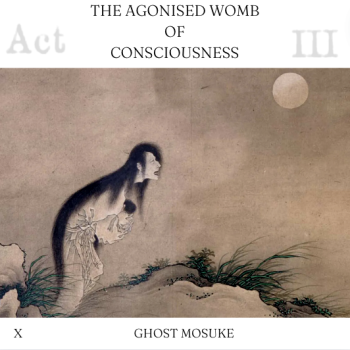Lectionary Reflections
Luke 3:1-6
December 9, 2012
When I read the gospels, sometimes I picture myself sitting in a darkened theater, watching the action onstage or screen. I take note of the entrances and exits of the various actors and the role they play in each scene and in the larger story. During Advent I have my eye on John the Baptist. John the Baptist appears on stage in all four gospels. In Matthew, he has to wait in the wings until our main character, Jesus, has been introduced, cooling his heels through two long chapters of genealogy, birth, visit of the magi, escape to Egypt, massacre of the innocents and return from Egypt. When he does appear on stage in Matthew, it's more like he materializes into a 3D image out of nowhere, like a hologram. "In those days, John the Baptist appeared in the wilderness of Judea, proclaiming, 'Repent, for the kingdom of heaven has come near'" (Mt. 3:2).
In John's gospel the Baptist only has five verses to wait to make his entrance. When he does, I picture him being lowered straight down from the theater's rafters—Cirque du Soleil-style—with a wire hooked to a harness on his back. "There was a man sent from God, whose name was John" (Jn. 1:6).
For Mark the story of the good news of Jesus begins with the fulfillment of the prophecy of Isaiah that God is sending a harbinger, a voice crying out in the wilderness, to prepare humankind for Jesus' arrival. John only has four verses to wait in the wings while the narrator quotes from Isaiah. Then it's time for him to stride on stage as the Marcan narrator says, "John the baptizer appeared in the wilderness proclaiming a baptism of repentance for the forgiveness of sins" (Mk. 1:4).
Luke's Satisfying Playbill
I like both movies and plays, but one thing I prefer about plays is that you walk into the theater with more than just a ticket stub in your hand. You have the playbill that the usher hands you at the door. I'm one of those people who actually reads the playbill as I wait for the production to begin. I like to know something about each of the actors.
In the playbills for the Marcan, Matthean, and Johannine version of John the Baptist's career, we don't get much satisfaction. We find out from Mark and Matthew what John wore and what he liked to eat. But I want more background on my actors. I want the kind of detail Luke gives me in chapters 1 and 2. I want to know where someone is from and what their family background is. If the circumstances surrounding their birth were unusual and interesting, I'd like to know about them. I might like to know where they got their first name and what it means. I appreciate the fact that Luke has provided all of this for me with regard to John the Baptist in his production's playbill.
Setting the Scene in Luke
Another aspect of theater I really enjoy is the sets. They set the action in the realm of a specific place and time as one scene leads to the next. The more detailed and realistic they are, the more closely I'm drawn into the world they depict. Luke's introduction of John the Baptist zooms in on the historical setting—depicting it not with soft sepia lighting, but with sharp, HD precision. He hammers the historical stage set together, piece by piece; he portrays it visually pixel by pixel:
In the fifteenth year of the reign of Emperor Tiberius, when Pontius Pilate was governor of Judea, and Herod was ruler of Galilee, and his brother Philip ruler of the region of Ituraea and Trachonitis, and Lysanias ruler of Abilene, during the high priesthood of Anna and Caiaphas, the word of God cam to John, son of Zechariah, in the wilderness (Lk. 3:1-2).
Why this level of detail?
Luke gives the appearance of John an exact dating with an elaborate chronology reminiscent of ancient historians like Thucydides and Josephus. Only the first phrase in verse 1 is necessary to fix the date, but Luke adds additional information—a rapid survey of the political situation at this crucial moment, a setting of the Christian gospel in its imperial and local history. With each detail Luke gives us about Tiberius, Pontius Pilate, Herod, and Philip, he is building the political, historical set for the opening scene of the adult John's ministry.
Why?
Because, like Mark, Luke views John's story as the beginning of Jesus' story, not the preview. The first two chapters of Luke are integral to the story. They aren't merely the twenty minutes of previews before the feature film begins. When, in 3:1-2, the narrator gives us more contextual detail than we think we need, it is because Luke believes that for us to understand Jesus we must understand John.
To be attentive to John's context may nudge us that we need to be attentive to our own. To prepare for the power of Jesus' message, we must not be naïve about the powers-that-be in our own context. Luke presents John in the mode of an Old Testament prophet who begins to preach in this region of the Jordan, summoning his hearers to an act of repentance leading to forgiveness of sin. His work is seen as the fulfillment of Isaiah 40:3-5 (Marshall, Commentary on Luke, 132).





